I take the content out of images. I cut subjects and objects out of pre-existing images to eliminate distraction, basically simulating the state before the conscious mind sets in. In my work I am interested in bringing memory into the present, in reforming it and creating a new reality from it.
Anita Witek’s advice for artists who are starting out is concise and hard-hitting – kill your darlings and be true to yourself.
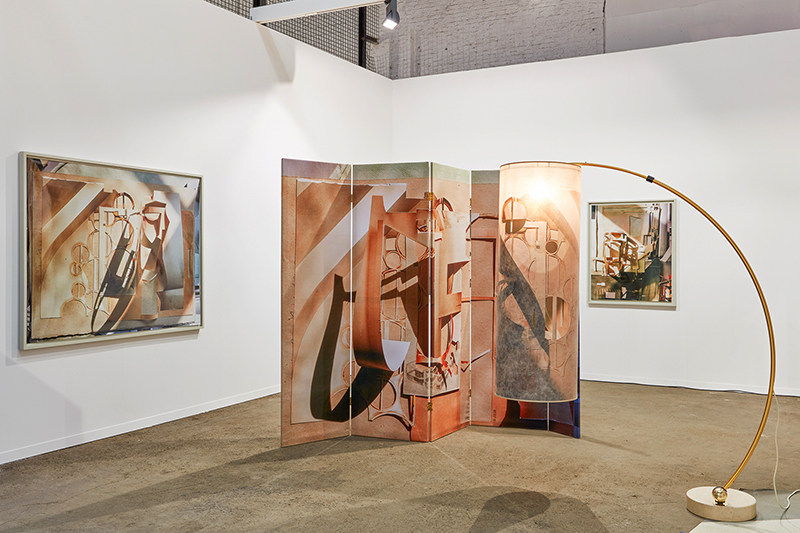
Anita Witek-reset, Art Brussels with l’étrangère, London, 2019
Take us to the beginning of your story. How did your tryst with art begin?
To answer that question, I have to go really far back to my formative years, visiting my family in the United States and my very first encounter with contemporary art there. It was Yayoi Kusama’s Infinity Room at the MOMA in 1987 that instantly opened up a huge universe, a space in my head and a hunger for art that has never stopped since.
When I returned to Vienna I enrolled into a course in fashion design, and later went on to study painting at the University of Applied Arts in Vienna and graduated as a painter. Straight after that I packed my car and moved to a vibrant and colourful London in 1998, at the peak of the Young British Artists (YBAs) movement. I enrolled at the Royal College of Art (RCA) in photography, graduated in 2000 and went on to do a residency at the ISCP Residency Program in New York. Altogether, I spent six years living in London. The city and my friends there are still close.
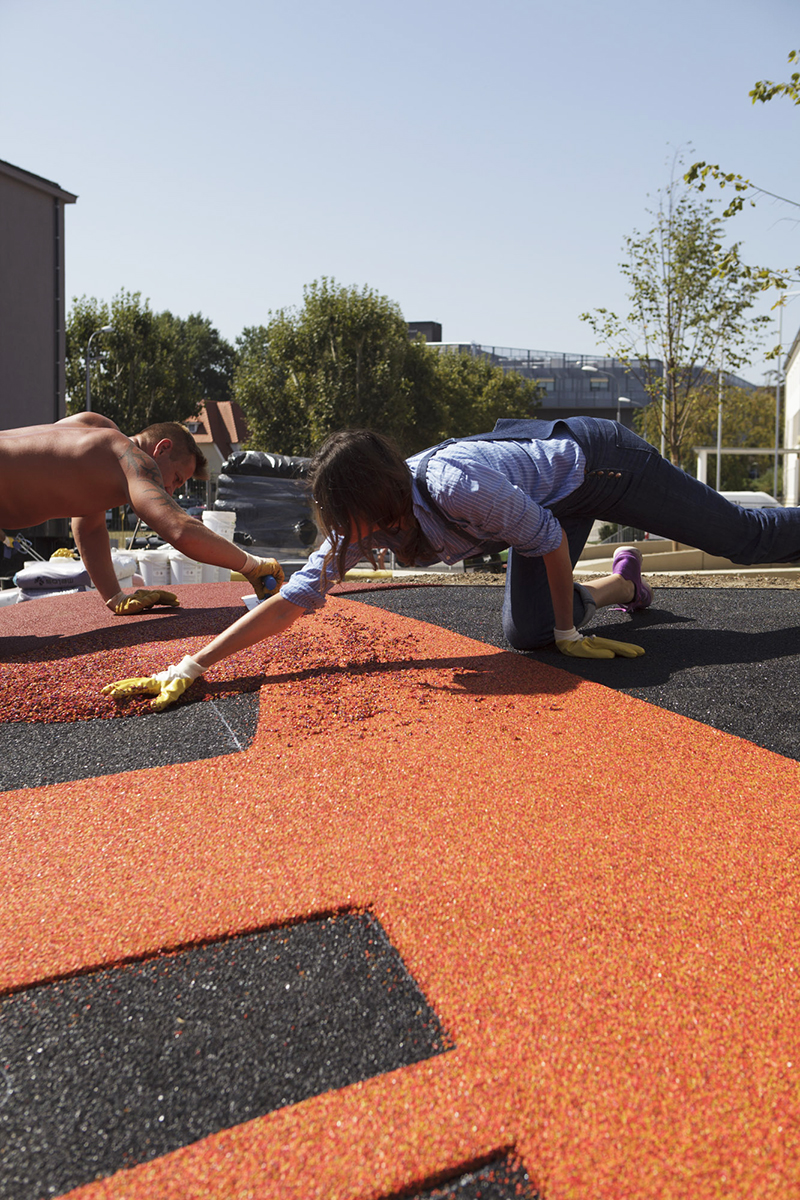
Circling the square – Public art Project, Eisenstadt, Photo: BIG Art, 2017
Tell us about the evolution of your practice over the years.
To explain my present methods connects back to the personal experience of arriving in London to live, and the process of discovering and understanding a new culture. I came across magazines and newspapers that became a source of information for me and I felt much more present and available in London than in Austria. This led to my first series, which was called Polaroids Of Places That Have Never Existed. It referred to my own search for a place to live and the illusive terminology used by real estate agents. In my art practice this involved creating imagined places rather than real ones.
At the RCA, however, I changed direction and began to experiment with other forms that still engaged with London as a city. For example I made a video work in 1998 called ‘Do You Know Where You Are, Do You Know What You Have Done?’, wherein I worked with the London Underground to capture CCTV footage of my own commute from my apartment to the RCA. You can watch it on Vimeo.
After I was back in Austria, I started to work with collage again, using paper clippings from printed matter, found images from books, magazines, newspapers and, over the years, I started to experiment with collages on a larger scale using billboard posters. This lead to my first intervention in space, a commission for the Vienna Stock Exchange 2014, called High Performance, a 37×25-metre long mural and from then on I developed the so called ‘walk-in’ collages.
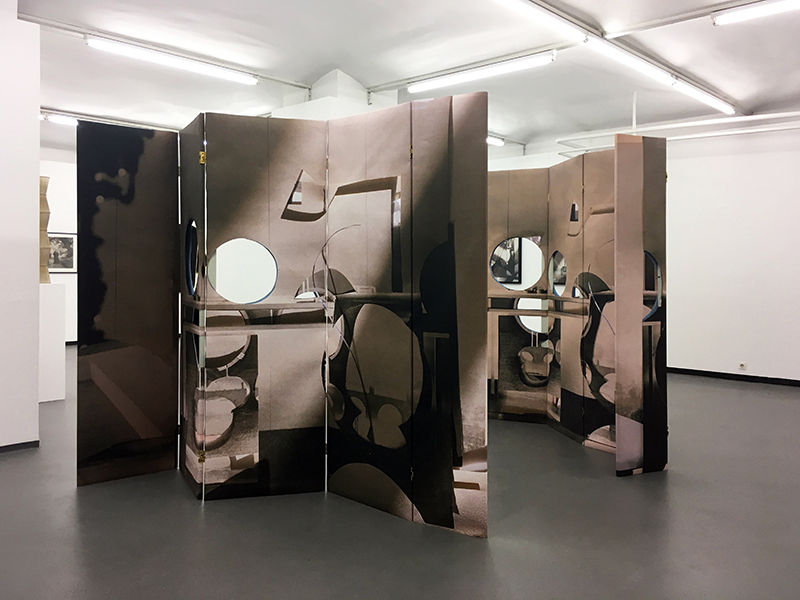
Welcome Home – Installation, Fotogalerie Wien, Vienna, 2017
What were your biggest lessons and hurdles?
Going from very small to very large dimensions and translating a collage into a three dimensional usable outdoor landscape, spanning an area of over 900 square metres. In 2015, I was invited for a public art commission to create a recreational space, a meeting zone for students and teachers, in front of a school. For that I translated a collage into a three dimensional usable area using grass, trees, EPDM rubber and 45 tons of concrete. That was quite a task which needed constant dialogue between a team of specialists and me. I called it Circling The Square and it was finished in 2017 after three years. It was probably the steepest learning curve for me to date.
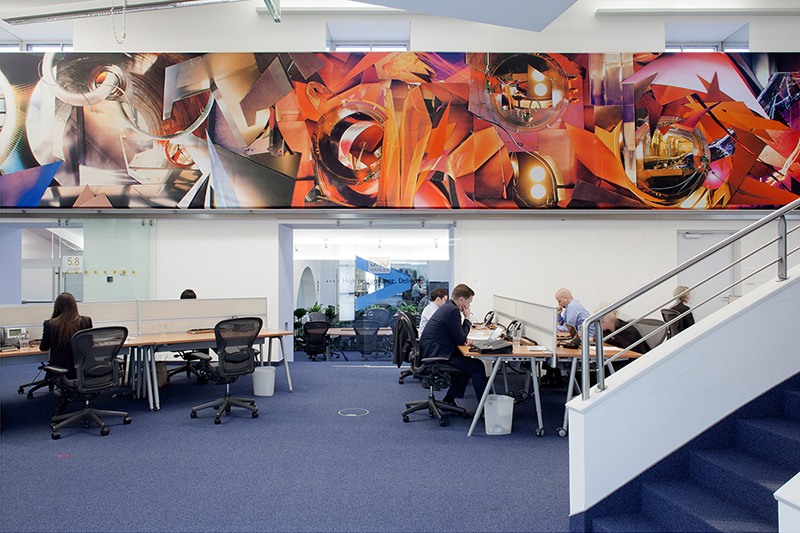
High Performance – wall work at Vienna Stock Exchange, 2014
What inspires you? Take us through your process and continuous frameworks of reference.
I usually start out with something that comes from print. It can be a story or a novel that is triggering the process or it can also be the material itself. ‘Best of…’ is a good example. It is a series of montages. I started with a photography book of David Hamilton’s soft-focus imagery that I found at a flea market in Berlin. I was interested in going beyond Hamilton’s suggested images in order to access the atmosphere and the settings in which he photographed these models.
At the same time I came across a magazine from the 1970s called Schöner Wohnen (Better Living), which offered tame suggestions on how to put people’s lives in order and live “properly”. I wanted to interweave these two pieces of source material by layering fragments on top of each other, like thoughts and memories are loosely layered. I dissected, detached and cut into these materials not only to interfere with the tension of their surfaces, but also question and destabilise their initial content. Through this process I investigate the fundamental differences between reality and representation, between material and image, between original and reproduction, and, ultimately, between popular culture and art – the conditions of contemporary image production.
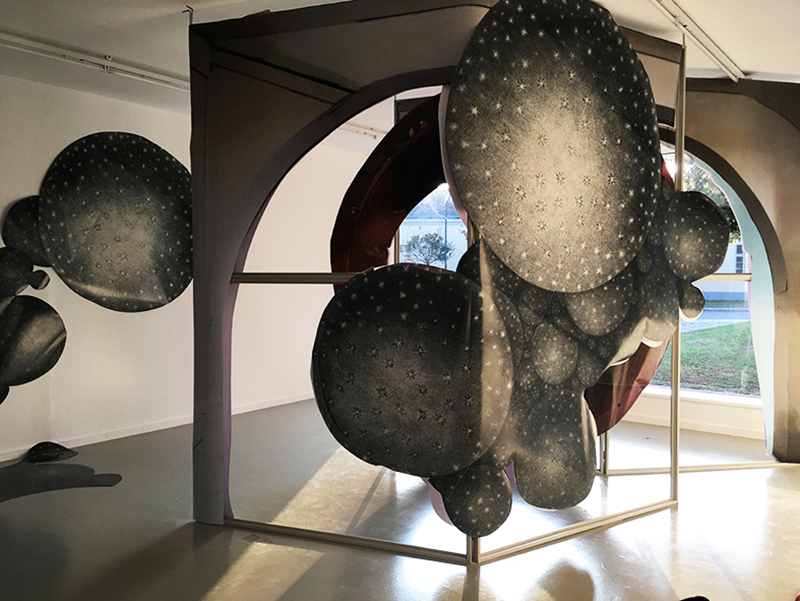
Full MOON – Installation, Kunstraum Weikendorf, 2018
Tell us about your most memorable moment.
All of a sudden finding a message in my inbox by curator Lucy Zimmermann from The Wexner Center for the Arts in Ohio, inviting me to do an installation in the museum she is working for, which is situated in a Peter Eisenman building. I was jumping to the ceiling when I read that, as it was the first time that my works would interact with architecture on that scale.
What is the primary role of an artist?
Questioning and interacting with given limitations and stretching all possible boundaries.
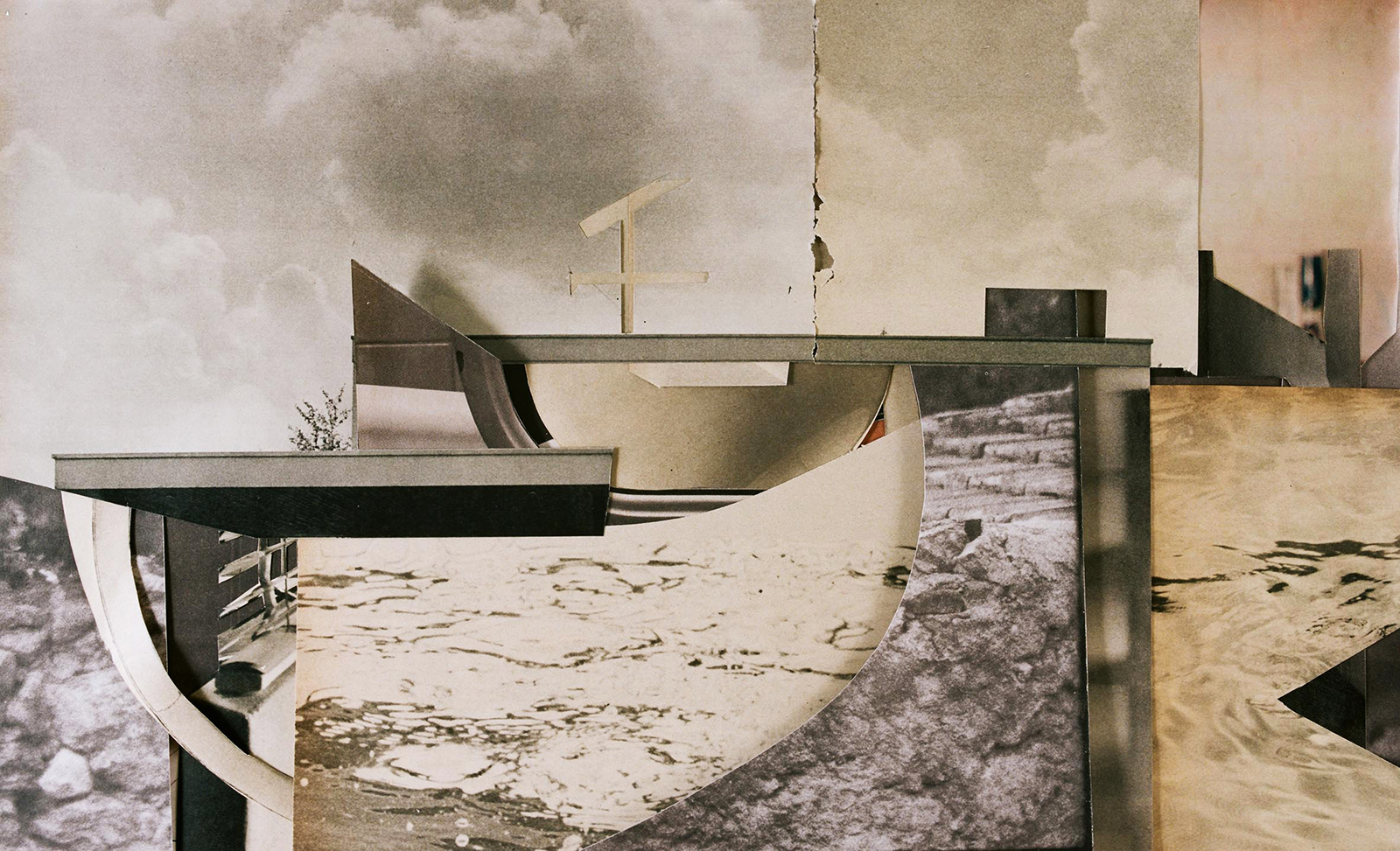
‘Best of…’, Montage, 2012
How do you describe yourself in the context of challenging people’s perspectives via your work?
I am interested in how material things are inscribed in memory and can bring up past experiences. Memory is not always helpful and can be a hindrance. For example, when you wake up there are those moments before you begin to think and remember. Those moments when you feel perfectly fine, like a newborn, like your first day. It’s only when your memories start creeping in that life gets more complicated. Analogous to that, I take the content out of images. I cut subjects and objects out of pre-existing images to eliminate distraction, basically simulating the state before the conscious sets in. In my work I am interested in bringing memory into the present, in reforming it and creating a new reality from it.
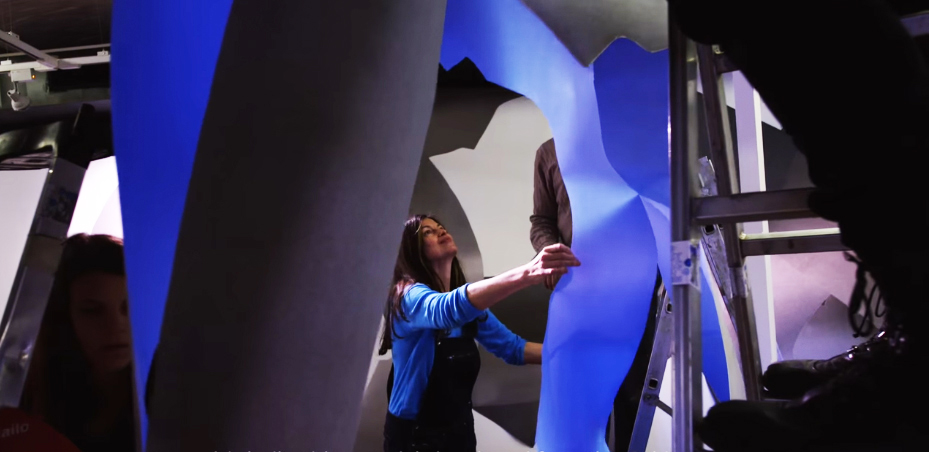
About life, Installing at Kunsthaus Wien, 2016
How do you balance art and life?
It’s hard to draw boundaries between the personal and the professional when you are an artist, as these areas seem to be interwoven.There are no weekends or non-working hours, as such, as one is always on duty somehow. Even in the evenings, like going to openings, talks, and screenings. Vienna has a very vibrant art scene. At the same time caring for my family does require a certain routine, like getting up at 6:40 am and preparing food in advance for the week so I can go to the studio. I have moved studios twice in the last three years, so that has shaken up my routine a bit as I had to restructure my whole set-up over and over again.
Talking about the balance between commercial versus the creative, I do like a framework, like being invited for shows and then working with a professional team with deadlines. I also enjoy interactions and working on commissions. I am only sensitive when my headspace gets invaded at a very early stage during the creative process by too much bureaucracy. That can switch off my creativity entirely. So, in that case I have learned to turn off online communication till the basic structure of the work has evolved and I can clearly discuss the facts and collaborate with everyone that is involved properly.
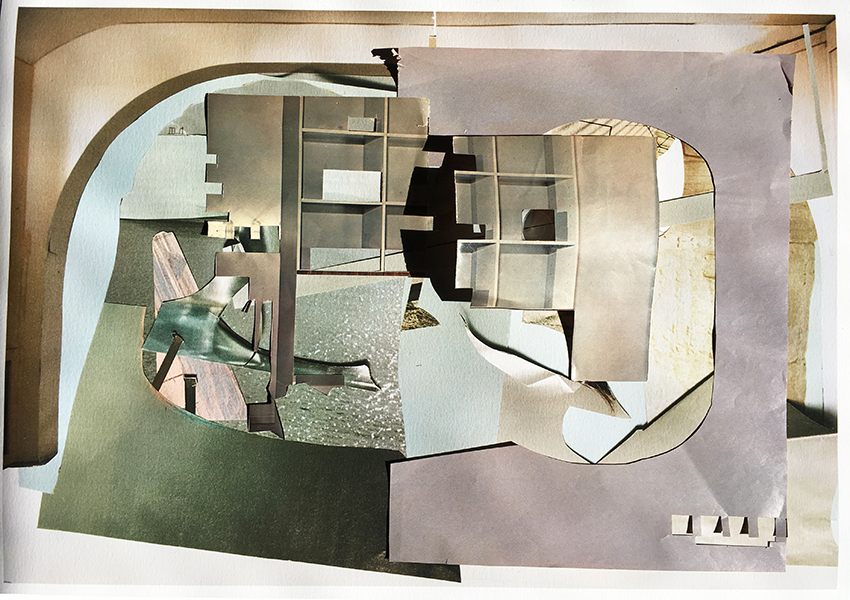
Full MOON (B), Collage on Fine Art Print, 2019
How do you deal with the conceptual difficulty and uncertainty of creating work?
Each time when I am not immersed in a project or let’s say I am between projects, I cannot believe that I had ever been able to create or ever will be again. I am still amazed that at some point the process seems to kick in by itself.
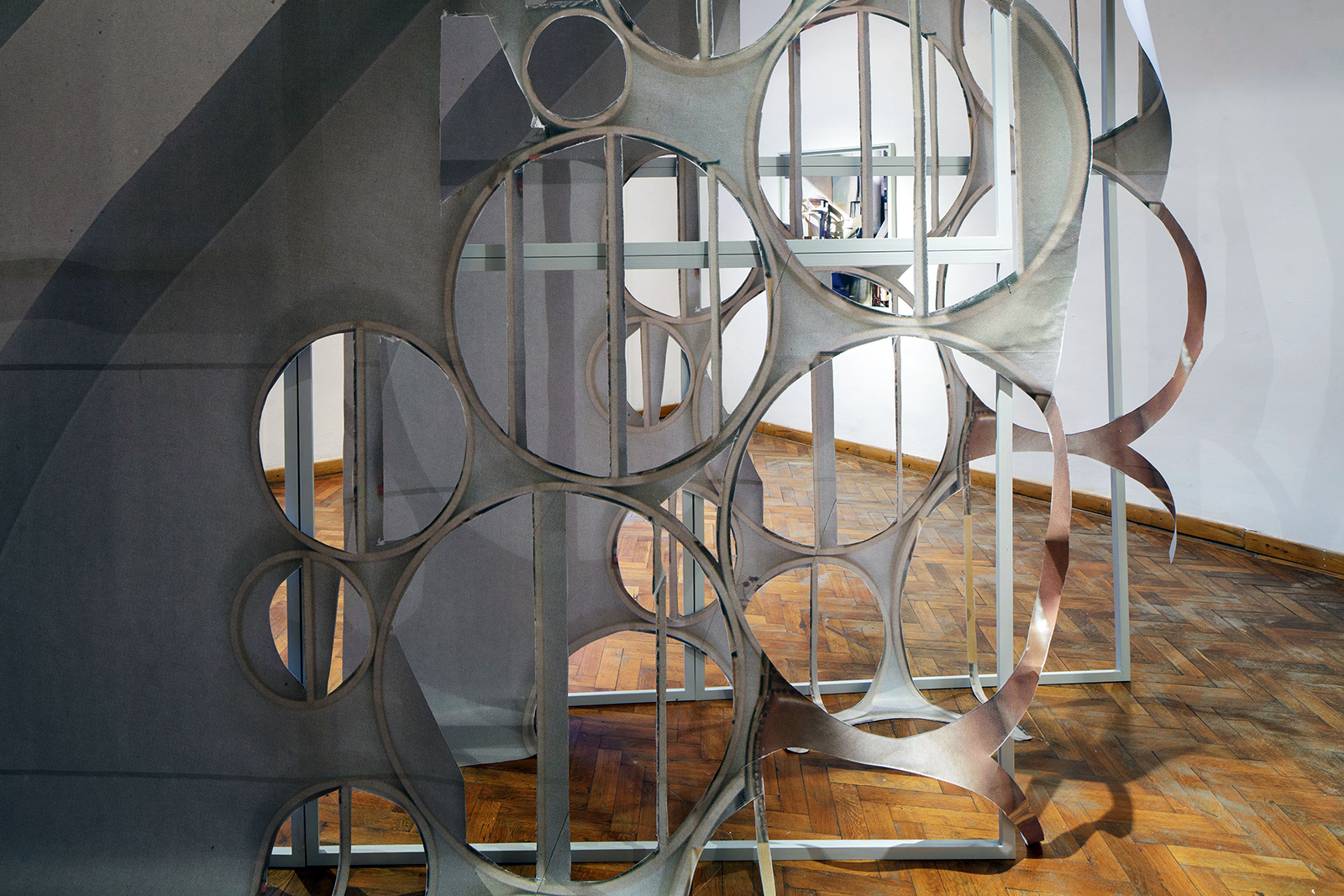
Reset Installation, European Month of Photography, Galerie Medium, Bratislava, 2016
How does your audience interact and react to your work?
It makes me very happy when my audience is interacting with my work, like in the walk-in installations. When visitors use it for their own theatre play, act in it, or take pictures of themselves it is satisfying. Recently a pupil from the school where I made a public space art commission contacted me on Facebook and asked if my intention also was to turn my work into a cycling parkour space, as he and his friends found it perfect for that.
What are you looking for when you look at other artists’ work?
The work must make me travel into another dimension. I still remember Kristin Oppenheim’s work, The eyes I Remember, at Greengrassi in London 20 years ago. Its depth and simplicity as well as the hunting quality of Kristin Oppenheim’s naked voice is still sends shivers down my spine. It was a very minimal installation, consisting only of two images and sound, but transformed the space into a whole different world. It left an impression for life.
What is that one thing you wished people would ask you but never do?
I wish someone would ask me to create an outdoor wall intervention, an interior of a bar or a restaurant.
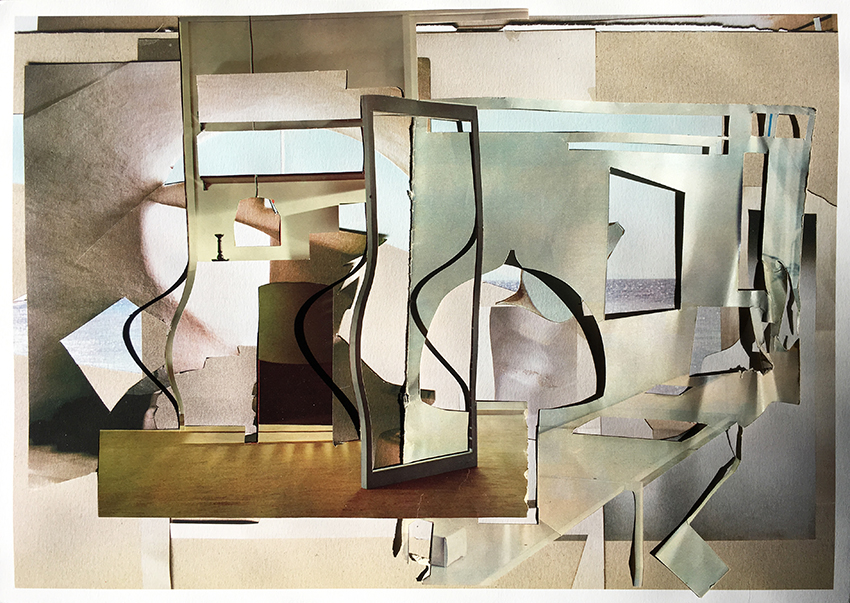
Full MOON (A), Collage on Fine Art Print, 2019
What is one imperative piece of advice you would give to someone who is just starting out?
Kill your darlings and always be true to yourself.
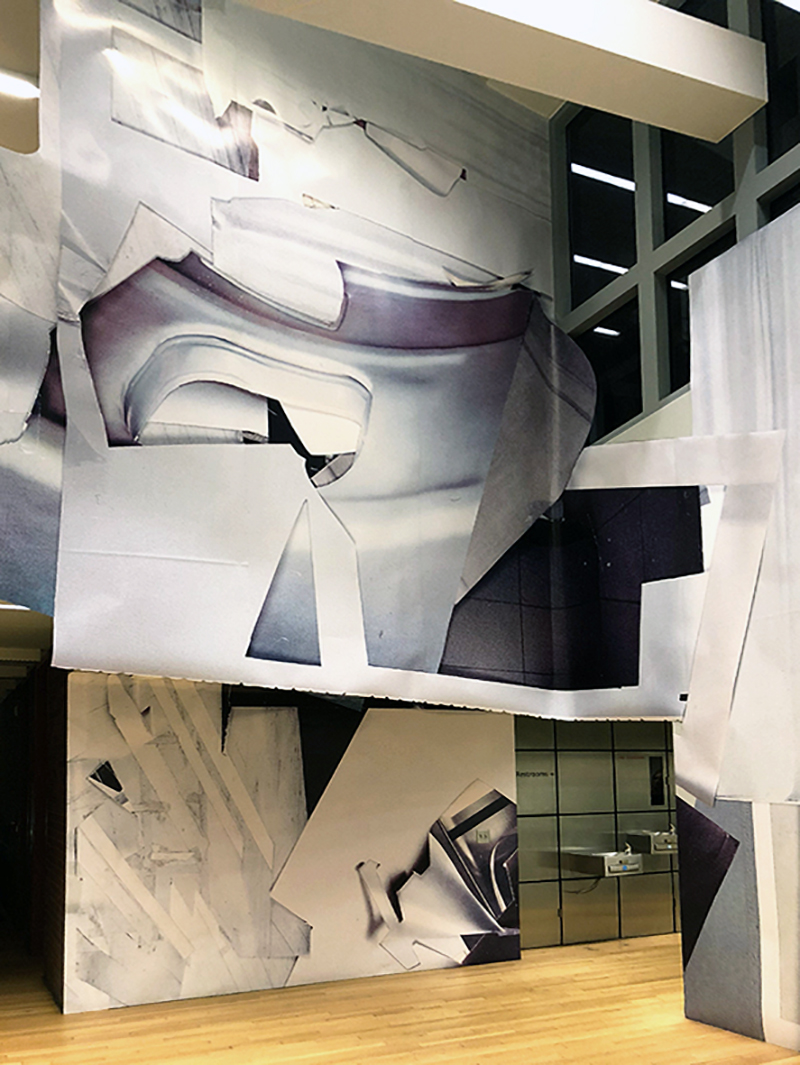
Clip – wall work, Wexner Center for the Arts, Columbus Ohio, 2018
What are you working on now? What’s coming next season?
I am just starting to prepare for a solo show at the Akademie Graz. It will happen in March next year. I am also planning to do a residency in Pune, India, at Bharti Lalwani’s place in April next year, which will be very exciting as it will be my first visit to your country.

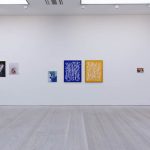
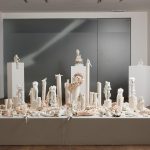
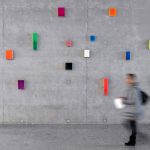
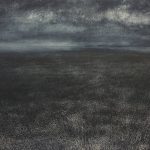
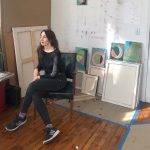
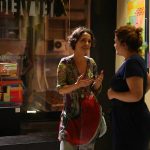

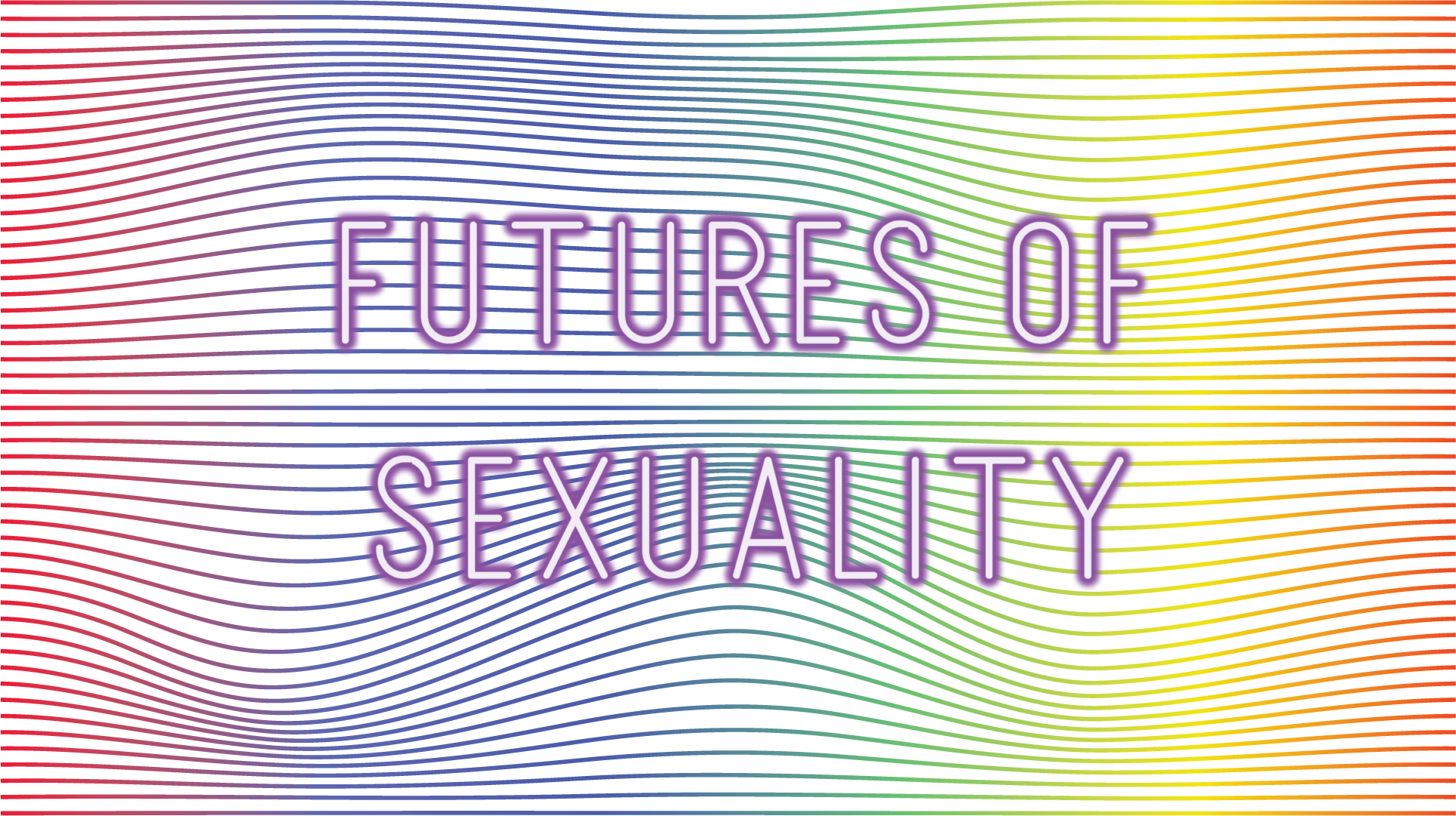
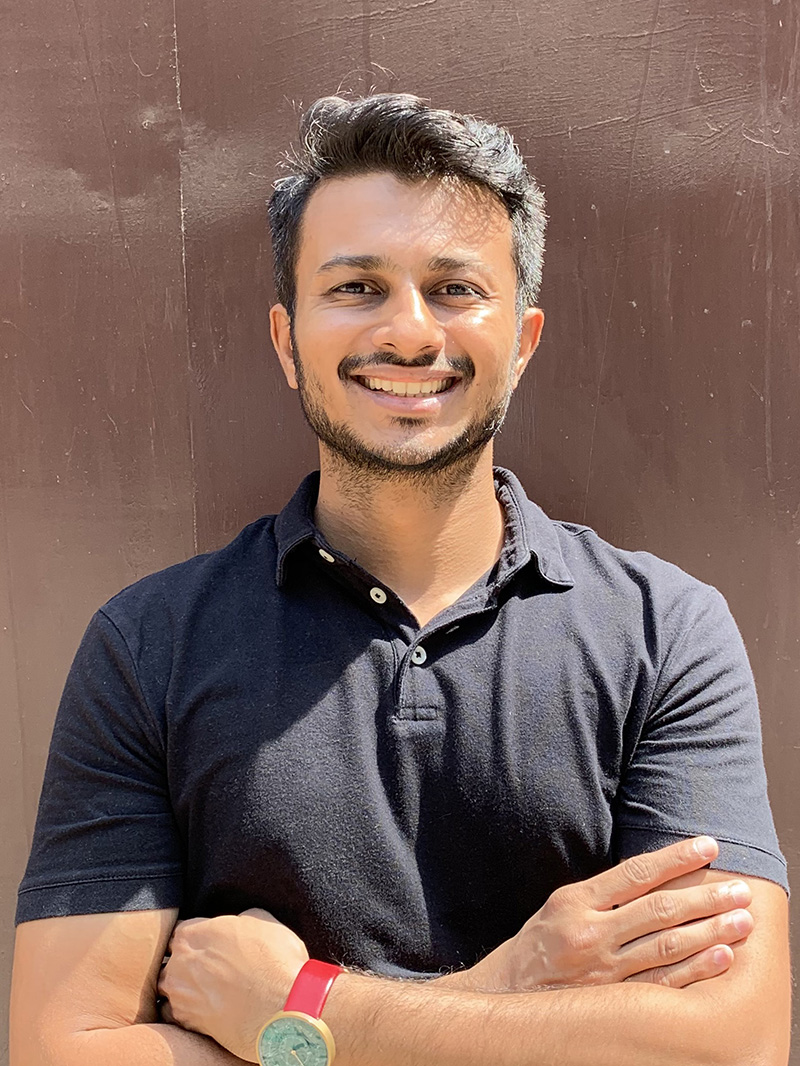

Add Comment